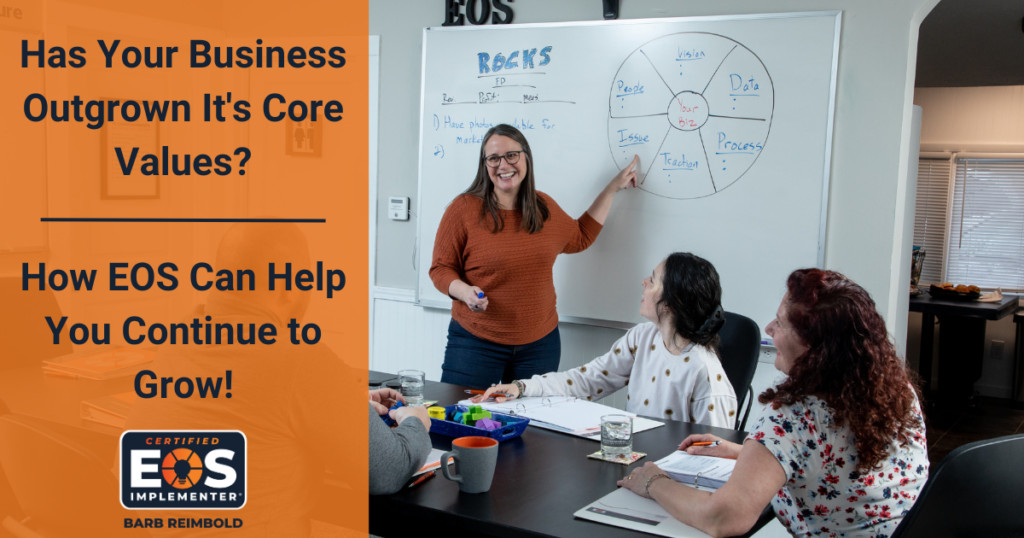In the world of EOS, one of the most important parts of your business’s success is clearly defined core values. These guiding principles shape a company’s identity, driving its culture, decision-making, and overall trajectory. As businesses evolve, it becomes important to check in on your core values to ensure they are still genuine drivers of growth or mere placeholders. Does your team have “accidental” or “aspirational” core values? If your answer is “yes” or even if it’s “I don’t know,” it might be time to give EOS a try.
Does Your Business Have “Accidental” Core Values?
“Accidental” core values, as the name suggests, are the beliefs that have naturally emerged within an organization due to its history, processes, or initial success. While these values may have played a pivotal role in getting the business to where it is, they might not necessarily contribute to further growth or advancement. A classic example can be likened to the story of a startup that thrived on an innovative and risk-taking attitude, only to find these same values holding it back as it scaled into a larger corporation.
It’s important to recognize these accidental values as potential roadblocks. Holding onto values that were suitable for a previous phase of the company’s journey can hinder adaptability and stall progress. Instead, EOS teaches us to take a proactive approach: reevaluating and recalibrating core values to align with the organization’s current vision and aspirations. We do this during our quarterly and annual sessions!
The Allure of “Aspirational” Core Values
On the flip side, “aspirational” core values represent the ideals an organization aspires to uphold, often reflecting the desired culture or persona. These values might seem appealing on the surface, but if they don’t genuinely resonate with the company’s identity, they can lead to a facade rather than a true cultural shift. Imagine if Chuck E. Cheese had a suit jackets-only policy and only offered 5-course meals at $100 a head? That would not represent the core values of a family-entertainment venue. Just as Chuck E. Cheese doesn’t try to be something it’s not – like a fine dining establishment – your business must embrace its true identity. Forcing aspirational values onto an incompatible foundation can create a misleading culture and confusion among employees and customers alike.
“Culture is Leadership Behavior When You Think Nobody Is Watching”
At the heart of both accidental and aspirational core values lies the notion that culture is shaped by leadership behavior. Whether accidental or aspirational, core values manifest through the actions of leaders. As leaders, it’s important to stay aligned and communicate regularly about your business’s core values. When you have everyone working towards the same goals and making decisions about the business based on the same core values, you’ll create a culture and a team that does the same thing.
Struggling to Define Your Core Values? EOS Can Help!
As businesses evolve, it’s important to check in with your team to ensure that your core values still fit with the trajectory of your business. By letting go of the accidental and embracing the authentic, your team can drive innovation and propel your business confidently towards your desired future.
Want to learn how EOS can help you? Contact me today for a free, 90-minute consultation!



